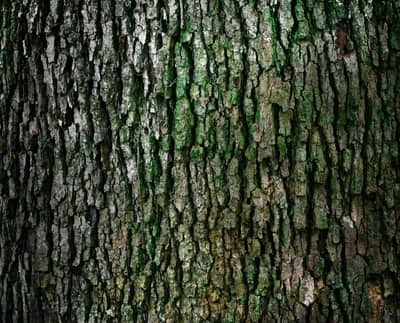Vegetable tanning has a long history that begins with prehistory and over the years has reached an advanced level. I was excited to have done a bit of research on how vegetable tanned leather is made with a resulting leather that ages amazingly well without cracking, peeling or fading with time.
What is vegetable tanned leather? Vegetable-tanned leather is leather that was treated by a tanning process called vegetable tanning. Vegetable tanning is using pure plant extracts without any form of chemicals to treat the hides and skins of animals into the leather.
The vegetable tanning material (vegetable tannins) are derived from:
- Tree Backs
- Woods
- Leaves
- Fruits
- Roots
The vegetable tanning process takes about two months to three months to complete. In this article, we will delve into the details vegetable tanning process and why it results in the best type of leather in the world.
Vegetable Tanning Materials
In our introduction, we spelled out the various kinds of plant extracts used in the vegetable tanning process. Let’s throw more light on that a bit.
Tree Barks For Vegetable Tanning of Leather
.

Nature is wonderful! With the beautiful breath of fresh air, trees give us, the barks of tress are also used in turning animal skins and hides into beautiful leather. There are different kinds of tree barks that can be used for tanning leather and each has its unique color effect on it.
Oak Bark
The oak bark from central Europe when used produces firm leather. It results in a yellow-brown color.
Pine Bark
Also from Central Europe is used due to its high sugar content which forms strong acid suitable for tanning. It gives the leather a yellow-brown with reddish cut color effect.
Hemlock Bark
This tree bark from the North of the United States of America and Canada is used in vegetable tanning and gives the leather a reddish color.
Mimosa Bark
The Mimosa bark is common in South Africa and Australia. When used for tanning leather results a pale leather with a trace of red. This leather after it is vegetable tanned when exposed to light darkens.
Bagaruwa
From the West and Central Africa, the bagaruwa tree bark also known as bagalura is used in vegetable tanning. The resulting color it gives leather after tanning is a pale color.
Acacia Negra
From Brazil, the acacia tree bark is also used for vegetable tanning and gives a darker leather color.
Bablah or Babool
Bablah gives leather lime water-resistant ability. The bark is obtained from India and Pakistan.
Willow Bark
The willow tree bark commonly found around Russia gives a mildly pale leather.
Woods For Vegetable Tanning of Leather

With the vegetable tanning leather being an environmentally friendly leather tanning process, one could be bothered about how trees may be harvested for barks and wood. Usually what happens is that there are designated trees for the leather tanning industry. Also, trees dying out are harvested for such purposes. Now let us take a look at the various woods for vegetable tanning.
Oak Wood
The oak wood from Central Europe is a vegetable tanning agent that is used in combination with other tanning materials to tan leather into a firm material.
Chestnut Wood
Chestnut wood gives the leather a pale color. It can be gotten from Southern Europe.
Quebracho and Urunday Wood
Quebracho and Urunday wood both from South America give leather its rich reddish leather color, firmer feel and has a fast tanning action.
Cutch Wood
The cutch wood like the quebracho and urunday wood have a fast tanning action. It can sourced from East Africa and India. After tanning, the leather is soft with a dark color.
Fruits/Pods For Vegetable Tanning of Leather
Myrobalans Fruit
It is also a suitable fruit for vegetable tanning leather. It can be sourced India, South East Asia and mostly used for combination tanning of leather.
Tara (Teri) Fruit
The tara fruit of South America and India has great tannins that make leather soft and pale when used for tanning. Tara fruit for tanning skins makes the leather heat resistant. Leathers tanned this way are mostly used for automotive and upholstery.
Algarobilla Fruit
This special Central and south American fruit is also used for vegetable tanning. It gives the tanned leather a yellow-brown color. Also, leathers tanned with Algarobilla fruit are soft.
Dividivi Fruit
With its strong forming acid quality, the dividivi fruit also from central and south American is used for combination tanning. It results in spongy, off-shade leather.
Leaves For Vegetable Tanning

Acorn Leaves
Hungarian acorn leaves are suitable for vegetable tanning. They result in tough firm leather with a brown-grey color.
Sumac Leaves
From most Mediterranean countries, the sumac leaves have potency in vegetable tanning. It makes the tanned leather soft and supple leather. It is used in making fancy leathers. it, however, gives a pale color to the leather.
Gambir Leaves
The gambir leaves are mostly for its extract only, however, its use in vegetable tanning is also profound. It can be seen in India, China, and Southeast Asia. It produces soft, pale, extensively lightfast leather.
Roots for Vegetable Tanning of Leather
Canaigre Roots
Canaigre root is a type of root used for vegetable tanning in leather production. Its tannins make it suitable for tan leather. Canaigre roots is common in Mexico and Algeria in North Africa.
Badan Roots
The badan roots of Russia can also be used in combination with other tanning materials for vegetable tanning.
Why do I need vegetable-tanned Leather?
There are so many reasons why you will want to choose vegetable-tanned leather. Vegetable-tanned leather are the best form of tanning for leather although it can take 2 – 3 months to finish. It usually makes the best kind of leather products.
You will especially need Vegetable-tanned leather because it is ideal for specific leatherwork projects like holsters and sheaths and many more. But in the case of sheaths or holsters, vegetable-tanned leather will be ideal because unlike vegetable tanned leather, chrome tanned leather reacts poorly with metals.
Yes so if it is within your budget, get a vegetable-tanned leather product always to enjoy the best quality in one of the most amazing gifts from mother nature, Leather 🙂



